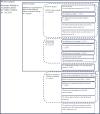Challenges Faced by Parents of Children With Selective Mutism in Accessing Medical Care Services
- PMID: 39529761
- PMCID: PMC11552463
- DOI: 10.7759/cureus.71304
Challenges Faced by Parents of Children With Selective Mutism in Accessing Medical Care Services
Abstract
Background Children with selective mutism (SM) typically exhibit SM symptoms in educational settings, which has led to extensive research on SM in such environments. However, SM symptoms also manifest in medical settings, where parents experience various challenges when seeking healthcare for their child with SM. Nevertheless, there is a lack of research on the specific challenges parents face when seeking medical care for their child with SM. In this study, we investigated the challenges faced by parents of children with SM when seeking healthcare services and explored strategies to reduce these challenges. Methodology In this study, we conducted an online questionnaire survey with 31 parents (mean age: 41.7 years) of children diagnosed with SM. Participants responded to open-ended questions about the difficulties they faced when seeking medical care for their child. The open-ended responses were qualitatively analyzed using the KJ method. Results Parents of children with SM reported the most challenges accessing medical services in pediatrics and dentistry. The analysis identified the following three main challenges parents face when seeking medical care for their child with SM: "Journey to Receiving Treatment," "Physicians' Inability to Accurately Capture the Child's Condition," and "Healthcare Providers' Responses." Conclusions These findings highlight the numerous challenges faced by parents of children with SM when seeking medical services for their child. The challenges faced by parents when bringing their child with SM to medical facilities may be alleviated through the implementation of telemedicine, the development of mobile health applications, multidisciplinary collaboration, and the introduction of SM-specific training programs for healthcare professionals.
Keywords: barriers to healthcare; healthcare survey; parent; qualitative analysis; selective mutism.
Copyright © 2024, Yamanaka et al.
Conflict of interest statement
Human subjects: Consent was obtained or waived by all participants in this study. Ethical Review Committee of Tottori University School of Medicine issued approval 21A174. Animal subjects: All authors have confirmed that this study did not involve animal subjects or tissue. Conflicts of interest: In compliance with the ICMJE uniform disclosure form, all authors declare the following: Payment/services info: All authors have declared that no financial support was received from any organization for the submitted work. Financial relationships: All authors have declared that they have no financial relationships at present or within the previous three years with any organizations that might have an interest in the submitted work. Other relationships: All authors have declared that there are no other relationships or activities that could appear to have influenced the submitted work.
Figures



References
-
- American Psychiatric Association. Diagnostic and statistical manual of mental disorders: DSM-5-TR. Washington, DC: American Psychiatric Publishing. Washington, DC: American Psychiatric Publishing; 2022. Diagnostic and Statistical Manual of Mental Disorders.
-
- Selective mutism and temperament: the silence and behavioral inhibition to the unfamiliar. Gensthaler A, Khalaf S, Ligges M, Kaess M, Freitag CM, Schwenck C. Eur Child Adolesc Psychiatry. 2016;25:1113–1120. - PubMed
-
- Children who are anxious in silence: a review on selective mutism, the new anxiety disorder in DSM-5. Muris P, Ollendick TH. Clin Child Fam Psychol Rev. 2015;18:151–169. - PubMed
-
- Selective mutism: a prevalence study of primary school children in the Republic of Ireland. Sharkey L, McNicholas F. Ir J Psychol Med. 2012;29:36–40. - PubMed
LinkOut - more resources
Full Text Sources
